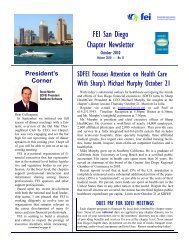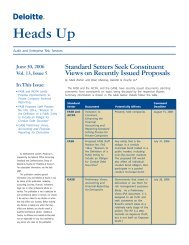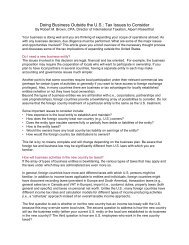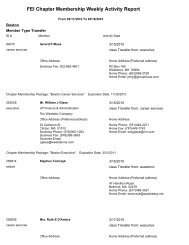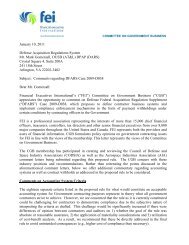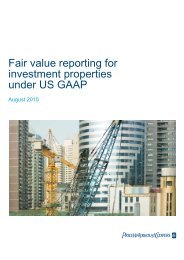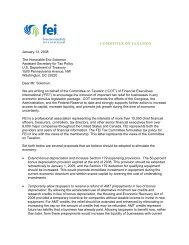FEI CCR Balance Sheet Offsetting Comment Letter - Financial ...
FEI CCR Balance Sheet Offsetting Comment Letter - Financial ...
FEI CCR Balance Sheet Offsetting Comment Letter - Financial ...
Create successful ePaper yourself
Turn your PDF publications into a flip-book with our unique Google optimized e-Paper software.
contract receives semi-annually, would a portion of the asset and liability balance relating only to<br />
those payments that net on a semi-annual basis be able to offset? We ask the Boards to propose<br />
a reasonable and operationally efficient manner to analyze payment netting, since current<br />
financial reporting systems do not currently allow the matching of all individual payments across<br />
instruments. This will require significant system enhancements to achieve matching of all cash<br />
flows and/or the offset of partial assets and liabilities if the unit of account is to be pierced.<br />
Simultaneous Settlement<br />
The Exposure Drafts define simultaneous settlement as having to occur at the same moment, i.e.,<br />
there is exposure to only the net or reduced amount. We find that this requirement is<br />
operationally impossible to verify and unreasonably strict. In ASC Subtopic 210-20-45, the<br />
FASB reached a determination that the clearing and settlement mechanism described therein<br />
constituted the “functional equivalent of net settlement” for repurchase and reverse repurchase<br />
agreements. Many preparers under current IFRS also consider this guidance in their application<br />
of IAS 32 (as currently interpreted). IAS 32 states that the operation of a clearinghouse leads to<br />
the equivalent of net settlement. Current practice under IFRS is to apply simultaneous settlement<br />
to transactions that settle through a central clearinghouse in the same account on the same day.<br />
Many repurchase agreements reverse repurchase agreements, and securities lending/borrowing<br />
agreements settle based on a batch process whereby positions that settle on a given day will be<br />
processed at different points during the day based on systematic/administrative limitations. The<br />
Exposure Drafts do not reflect how settlement systems in the capital markets operate and would<br />
result in a significant change in accounting practice merely based on the “form” of settlement<br />
focusing on logistical or immaterial timing differences. The substance of inter-day settlements<br />
gives adequate credit and liquidity risk protection, along with the other credit risk mitigators in<br />
place at clearinghouses, such as daylight overdraft protection, lines of credit, and excess<br />
collateralization.<br />
It is impossible to verify when settlement is performed at the clearinghouse between<br />
counterparties as described above. Therefore, we feel that the settlement on the same day with<br />
both counterparties significantly reduces both credit and liquidity risk. We strongly recommend<br />
that the Boards redeliberate this criterion to align with current practice.<br />
Requirement of Offset<br />
Many of our members who are not financial institutions do not have significant portfolios of<br />
eligible financial assets and liabilities that fall within the scope of the Exposure Drafts,<br />
specifically derivatives or repurchase agreements. Under US GAAP, presentation of these<br />
balances is reported on a gross basis. Although the current criteria in the Exposure Drafts have<br />
considerable hurdles to achieve offset on the face of the balance sheet, they would now “require”<br />
offsetting of eligible financial assets and liabilities. Some of our members would like the<br />
opportunity to report eligible financial assets and liabilities on a gross basis if they do not<br />
consider the impact to be material to the balance sheet. We believe that the search for<br />
unrecorded netting would be onerous and costly to preparers with little benefit to users. In<br />
addition, please see comments on the scope of the disclosure requirements as mentioned in the<br />
Question 4.<br />
Page | 5



